What's In This Issue
| Latest News Knitted Hats Deck Cleaning & Sealing Cleaning Decks |
Deck Sealers Caring for Composite Decking Scale (Off Topic) |
I'm back in New Hampshire after a two week solo road trip down and back to Savannah, GA. It was primarily a business trip, but I did make numerous stops to visit old friends who live in the Mid-Atlantic and Southern states.
There sure is some great food in Savannah, GA! I had some delicious shrimp and grits and two different pecan pies that were to die for. Oh how I love pecan pie. And then there was the sweet potato ginger soup. Wow!
Knitted Hats
Here's an update on my hat situation. Three resourceful women, Linda, Maggie, and Greta, have made hats for me. There were some sizing issues, but we just about have that worked out.
 I got to meet Linda Hayes in person while in Savannah. She lives in Georgia, and was in town with her husband Tom, visiting their son I believe. Linda made three hats for me, and one of my buddies from the conference captured a quick video of the two of us just after she presented them to me.
I got to meet Linda Hayes in person while in Savannah. She lives in Georgia, and was in town with her husband Tom, visiting their son I believe. Linda made three hats for me, and one of my buddies from the conference captured a quick video of the two of us just after she presented them to me.
On my return trip from Savannah to New Hampshire, I gave away one of the three hats to my buddy, Mike Wilson, who's battling cancer. A side effect of chemotherapy is being cold. He's not got a lot of hair on his head to begin with so Linda's hat made him warm and put a big grin on his face as you can see in this photo.
 Here's a photo of the hat Maggie made for me. Perfect setting with the snow covering the lake behind me! Greta, we've got to figure out how to make your hat fit on my big head!
Here's a photo of the hat Maggie made for me. Perfect setting with the snow covering the lake behind me! Greta, we've got to figure out how to make your hat fit on my big head!
Deck Cleaning and Sealing
I promised you that this issue would be completely devoted to deck cleaning and sealing. One wouldn't think this is important right now, especially if you live up here in New Hampshire or any other state where there is still snow on the ground. Spending time on decks seems like its months away.
But my trip to Savannah, where last Wednesday I was in shorts and a tee shirt enjoying 79F weather, reminded me that millions of people are getting ready down South to clean and seal their decks.
Cleaning Decks
The mainstream media, home improvement TV shows, magazines, etc. for years have broadcast information about cleaning decks that I feel is just plain harmful and wrong.
The two primary things that are mentioned are using chlorine bleach and pressure washers to ready your deck for a sealer. For well over seventeen years, I've written about how both can do serious harm to wood surfaces and vegetation and trees near your deck.
I've received hundreds of emails from deck cleaning companies that rail on me about how I trash pressure washers. The pressure washer manufacturers are not too happy with me as well.
But I've been on hundreds of decks that have been ruined by pressure washers - some of which were cleaned by *pros*. The high-powered stream of water rapidly erodes the lighter bands of spring wood from between the darker bands of summer wood.
Realize that when a tree grows during a single year it adds two bands of wood. The light colored band is the wood added in the spring when the tree grows rapidly. It's not as dense as the dark band that represents growth through the summer months and early fall.
Understand that a high-pressure stream of water, over time, will erode the spring wood. That's a fact. Get too aggressive with both pressure, small degree tool tip and distance of wand to wood, and you can have a one-year-old deck looking like a 50-year-old fishing pier.
Chlorine bleach is highly damaging to natural wood. It removes the color of the wood turning the wood white, it's corrosive to all nails and metal framing connectors, and it's highly toxic to all plants and trees around the deck.
My neighbor in Cincinnati killed a gorgeous tree of hers next to her patio because each spring she poured 5 gallons of pure chlorine bleach on her patio to clean off the algae. I told her she was poisoning the tree, but she blew me off as if I was an idiot. The tree is gone and she paid a tree service thousands of dollars to remove it.
The best method, in my opinion, to clean a deck is to use oxygen bleach and a scrub brush. That's what my Stain Solver is oxygen bleach. Oxygen bleach does not remove the color from wood, it doesn't harm any metal and it's beneficial to all the plants and trees around your deck. It's easy to use and my Stain Solver is just days away from being certified organic.
Here's a video that shows you how I use Stain Solver to clean a deck. It's a little corny, but that's because the TV station that commissioned the video wanted me to try to add a little humor to my videos. You can see I'll never make it as an actor.
Could you do me a huge favor? If you LIKE that video, can you click the Thumbs Up button in the lower left corner of the video player? Thanks. The pressure washer people are the ones clicking the Thumbs Down. It could also be from any professional actors and actresses watching it now that I think of it.
The annual spring Stain Solver Deck Cleaning Sale is just weeks away. Be SURE to open all upcoming newsletters to watch for the flash sale that will only last one week.
Deck Sealers
I've written countless columns at my website about Deck Sealers. There are many different kinds. Some are film formers and others are penetrating sealers. They both come clear or pigmented.
Last year I intended to start a very thorough testing of deck sealers. But I got very sick in the spring and it took months to recover. By the time I felt better, too much of the summer had passed to get good first-year test results.
I'm starting the sealer test no later than May 1st of this year. I'll have the deck sealer results available starting in the spring of 2013.
But here's what I can already tell you. I've not yet discovered a clear sealer of any type that doesn't fail the first year. They all allow the wood to turn gray within months. If you know of one that does NOT turn gray, I'd love to know about it.
In fact, I'd LOVE to hear from you about any deck sealer that you've tried that has worked really well or has failed miserably. I'll be sure to include them in my upcoming test.
The pigmented sealers do a great job of preventing deck wood from turning gray. The question is how good they are at repelling water over long periods of time. I'll be testing that as well.
Caring for Composite Decking
I get many emails about composite deck care. These decks have been sold for years as being maintenance-free. The truth is you need to care for them, even if that means annual or twice-a-year cleaning.
Once again, the best cleaner is oxygen bleach. Certain composite deck materials that have a cap stock or are solid plastic or vinyl can be cleaned with a pressure washer with little chance of damage. But always test first to make sure.
The best way to test for damage is to clean side-by-side areas of the composite deck with a pressure washer and the other section by hand with a scrub brush and some soap. You can attach the scrub brush to a pole so you're not on your hands and knees.
Rinse the deck well and allow it to dry. Look closely at the section cleaned with the pressure washer to check for surface damage or color differences.
Off Topic - Scale
I sometimes talk about scale. A few weeks ago, I brought this up about cupolas that sit on roofs. Scale is important with wood trim in a home too. Talk to any architect and they'll tell you they get extensive schooling on scale.
But what about scale in everyday life? Go to this website and you'll quickly discover how big or small something is.
Be SURE to click on the descriptions of the items for a laugh.

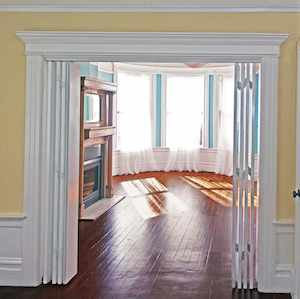


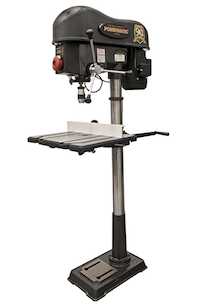
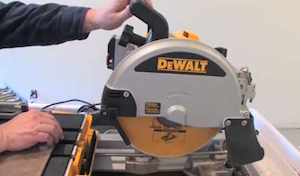
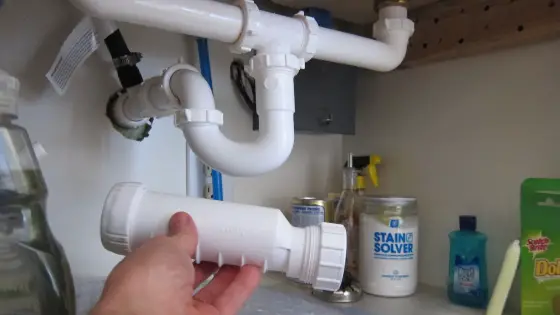
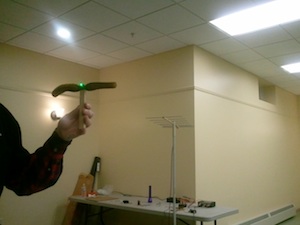 The lake's been frozen solid now for about three weeks. It's now starting to talk. That's what I call it. It makes these very low warbling noises that sound like reverb on a guitar amplifier. That's the best way I can describe it. I'm quite certain it's the wind flexing the ice and creating a harmonic with the water. Kathy says it's the aliens under the ice wanting to get out.
The lake's been frozen solid now for about three weeks. It's now starting to talk. That's what I call it. It makes these very low warbling noises that sound like reverb on a guitar amplifier. That's the best way I can describe it. I'm quite certain it's the wind flexing the ice and creating a harmonic with the water. Kathy says it's the aliens under the ice wanting to get out. I got a comment on my AsktheBuilder Facebook fan page from Rob who saw me wearing my red, white and blue knit hat. He said: "You need to get an ATB hat!"
I got a comment on my AsktheBuilder Facebook fan page from Rob who saw me wearing my red, white and blue knit hat. He said: "You need to get an ATB hat!" Hello Kindle Users,
Hello Kindle Users,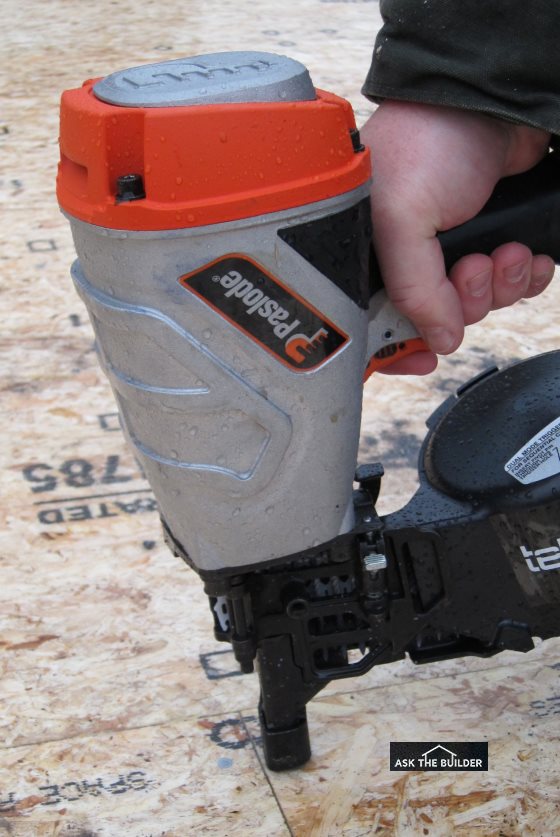
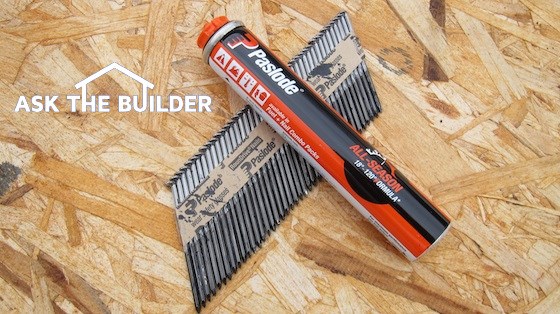
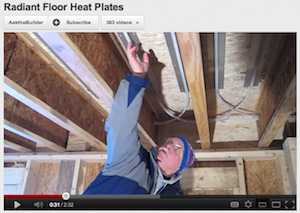 If you've never experienced the soothing heat produced by radiant infloor heating, all I can say is, it's glorious. As I type this newsletter, I'm enjoying it in my own home.
If you've never experienced the soothing heat produced by radiant infloor heating, all I can say is, it's glorious. As I type this newsletter, I'm enjoying it in my own home.